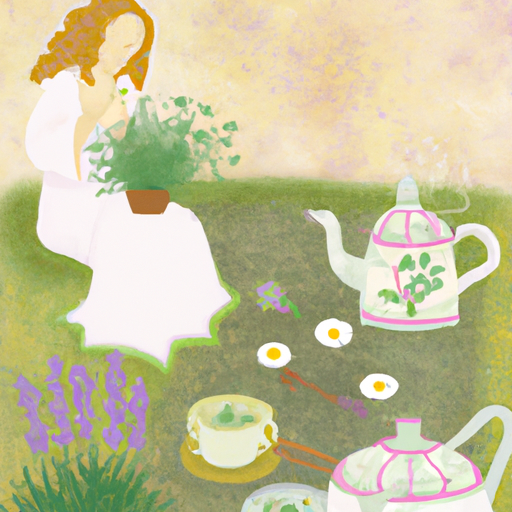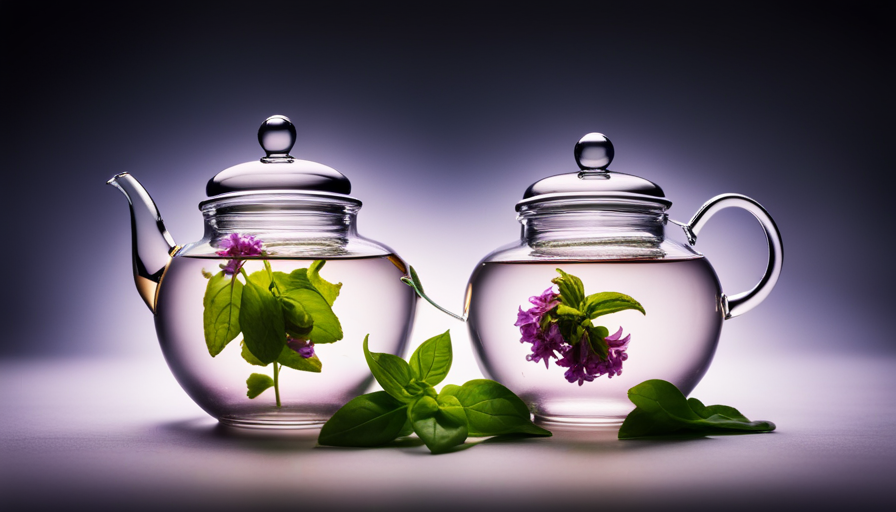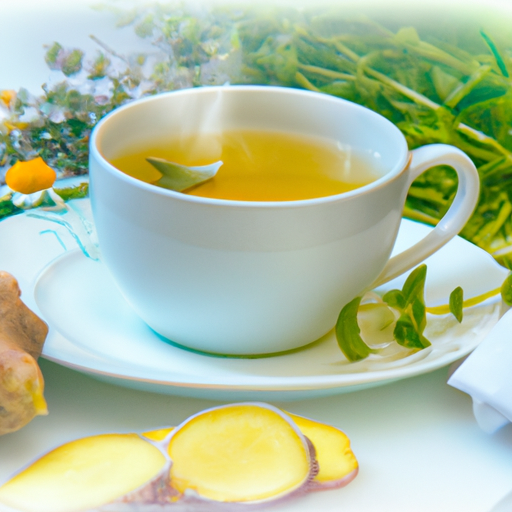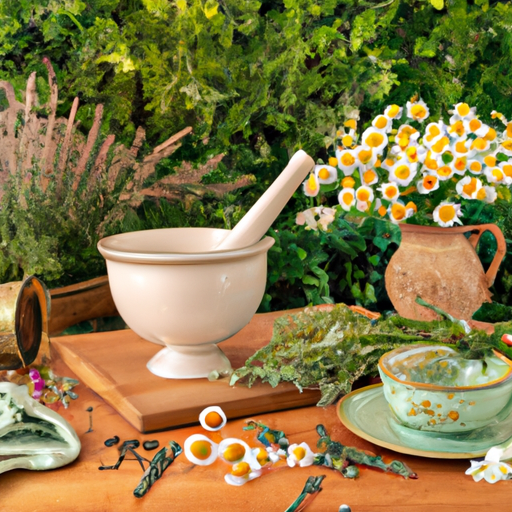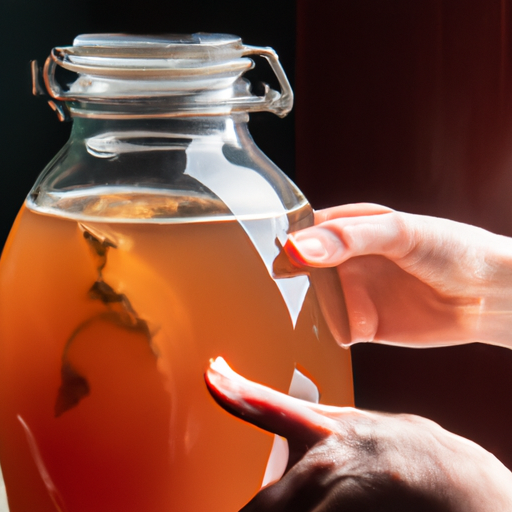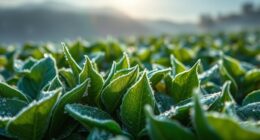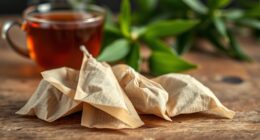Have you ever pondered why a hot cup of herbal tea has the ability to calm both the body and mind? It’s because nature has a knack for offering us the ideal solutions for our problems.
And what better way to tap into nature’s healing powers than by making your own herbal tea from the garden? In this article, I’ll guide you on a journey through the enchanting world of herbal tea-making.
We’ll start by choosing the right herbs and flowers that will not only tantalize your taste buds but also offer a myriad of health benefits. From there, we’ll explore the art of harvesting and preparing these precious ingredients to ensure maximum flavor and potency.
I’ll also share with you the secrets of drying and storing your herbs, so you can enjoy your homemade tea all year round. And of course, I’ll reveal the brewing methods and techniques that will help you create your perfect cup of herbal bliss.
So, grab your gardening gloves and let’s embark on this delightful tea-making adventure together!
Key Takeaways
- Choosing the right herbs and flowers is important for taste and health benefits.
- Harvesting and preparing ingredients involves washing and drying them.
- Different herbs and flowers thrive in different growing conditions.
- Experimenting with flavor combinations allows for unique blends.
Choosing the Right Herbs and Flowers
When choosing the right herbs and flowers for your herbal tea, it’s important to let your intuition guide you. Your intuition will lead you to the plants that will not only nourish your body but also uplift your soul. Consider the growing conditions of each herb or flower, as they play a crucial role in their development and medicinal properties.
Some herbs, like chamomile and lavender, thrive in sunny areas with well-drained soil. On the other hand, peppermint and lemon balm prefer partial shade and moist soil. Each herb and flower possesses unique medicinal properties. For example, chamomile has calming effects and aids in digestion, while lavender promotes relaxation and helps relieve anxiety.
By understanding the growing conditions and medicinal properties of the herbs and flowers, you can create a perfectly balanced and soothing herbal tea from your garden.
Harvesting and Preparing the Ingredients
After carefully plucking the fresh ingredients from your flourishing garden, you’ll want to gently wash and dry them before moving on to the next step. This ensures garden to cup freshness and helps preserve the herbal flavors.
Washing the herbs and flowers eliminates any dirt or insects that may have found their way onto the leaves. Fill a basin with cool water and immerse the ingredients, gently swishing them around to remove any debris. Once clean, pat them dry using a clean towel or paper towel, being careful not to bruise or damage the delicate leaves. This step is crucial for preserving the quality and taste of the herbs.
Now that your ingredients are clean and dry, they’re ready to be used in your homemade herbal tea.
Drying and Storing Your Herbs
Once your garden treasures are gently washed and dried, it’s time to unleash the magic of preserving their flavors through the art of drying and storing. Preserving freshness is essential in making herbal tea from your garden. There are different drying methods you can use to ensure your herbs stay fresh and flavorful. One popular method is air drying, which involves tying small bunches of herbs together and hanging them upside down in a well-ventilated area. Another option is using a food dehydrator, which allows for controlled drying at a low temperature. Lastly, you can also dry herbs in the oven by spreading them out on a baking sheet and setting the oven to its lowest temperature. Whichever method you choose, it’s important to store your dried herbs properly to maintain their freshness. Using airtight containers, such as glass jars, will help protect your herbs from moisture and light, preserving their flavors for future use.
Brewing Methods and Techniques
To brew your own flavorful cup of herbal goodness, all you need is to master a few simple techniques and methods.
There are different types of herbal tea that you can make using the herbs from your garden, each with its own unique flavor and health benefits.
One common method is to steep the herbs in hot water for about 5-10 minutes, depending on the strength you desire.
Another method is to use the infusion method, where you let the herbs steep in cold water overnight to extract the flavors slowly.
You can also experiment with blending different herbs together to create your own unique herbal tea blends.
Remember to strain the tea before drinking to remove any herb particles.
Enjoy the soothing and rejuvenating effects of your homemade herbal tea!
Experimenting with Flavor Combinations
Get ready to embark on a flavorful adventure by exploring endless combinations of herbs that’ll transport your taste buds to a paradise of sensory delight. When it comes to herbal tea, the possibilities’re truly endless.
By experimenting with flavor combinations, you can create unique blends that’ll leave you craving more. Discovering unexpected pairings’s part of the fun, and the garden’s your playground.
Here’re five combinations to get you started:
- Chamomile and lavender: a soothing blend that promotes relaxation.
- Peppermint and lemon balm: a refreshing combination that uplifts the senses.
- Rosemary and thyme: a savory duo that adds depth to your tea.
- Hibiscus and ginger: a spicy-sweet fusion that invigorates the palate.
- Lemon verbena and mint: a zesty mix that awakens the senses.
So go ahead and explore, mix, and match. With these unique blends, your herbal tea experience’ll never be the same again.
Adding Sweeteners and Enhancements
Ready to take your sensory adventure to the next level? Let’s explore how you can enhance the flavors of your herbal concoctions with a touch of sweetness and other tantalizing additions.
When it comes to adding sweeteners to your herbal tea, natural alternatives are the way to go. Instead of refined sugar, try using honey or maple syrup for a healthier option. These natural sweeteners not only provide a delicious taste but also offer additional health benefits. Honey, for example, has antimicrobial properties and can soothe a sore throat. Maple syrup, on the other hand, is rich in antioxidants and can help regulate blood sugar levels.
In addition to sweeteners, you can also experiment with other enhancements like lemon juice, ginger, or even a splash of coconut milk. These additions can elevate the flavors of your herbal tea while providing various health benefits.
So go ahead, get creative, and enjoy the wonderful world of herbal tea!
Enjoying and Sharing Your Homemade Herbal Tea
Indulge in the exquisite flavors of your homemade herbal elixirs and share the joy of this sensory experience with loved ones. Hosting tea parties is a delightful way to showcase your herbal tea creations.
Set a charming table with vintage teacups and saucers, and offer an array of herbal tea options for your guests to choose from. As they savor each sip, your loved ones will appreciate the care and attention you put into making these delicious beverages.
To make it even more special, consider gifting homemade tea to friends and family. Package your herbal tea blends in pretty jars or tins and add a personalized label. Your loved ones will be thrilled to receive such a thoughtful and unique gift, and they will surely enjoy every cup of your homemade herbal tea.
Frequently Asked Questions
Can I use any type of tea leaves to make herbal tea?
You can use various types of tea leaves to make herbal tea. Different methods of infusing tea leaves can enhance the flavor and benefits. For example, chamomile leaves calm and peppermint leaves aid digestion.
How long does it take for herbs to dry completely?
To store dried herbs properly, make sure they are completely dry before storing them in airtight containers. To speed up the drying process, hang the herbs in a cool, dry place with good air circulation.
Does the brewing time affect the strength of the herbal tea?
Steeping time is like a conductor, orchestrating the symphony of flavors in herbal tea. It determines the strength, extracting the essence from the leaves. Factors like temperature and tea type also influence the final taste.
Can I use fresh herbs instead of dried ones in my tea blend?
Yes, using fresh herbs in tea blends is a great idea. However, there are benefits to using dried herbs in herbal tea, such as concentrated flavors and longer shelf life.
Can I combine different types of flowers and herbs to make a unique tea blend?
Why settle for ordinary when you can create a truly unique tea blend? By combining different types of flowers and herbs, you’ll unlock a world of flavors and reap the benefits of their individual properties.
Conclusion
In conclusion, making herbal tea from the garden is a delightful and rewarding experience. By carefully choosing the right herbs and flowers and harvesting and preparing them with care, you can create a personalized blend of tea that suits your taste and preferences. Experimenting with different flavor combinations and adding sweeteners or enhancements allows for endless possibilities. As the old saying goes, "A cup of herbal tea a day keeps the doctor away." So why not start brewing your own delicious and healthful herbal tea today? Cheers to enjoying and sharing the fruits of your garden!

